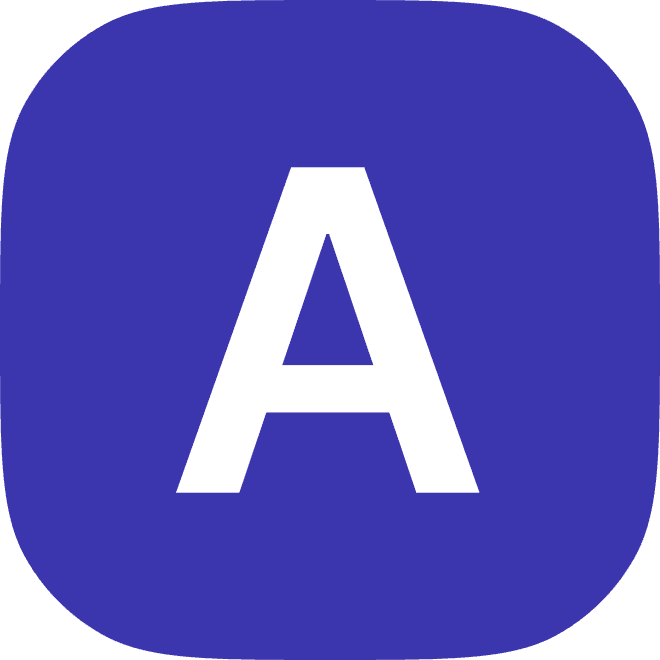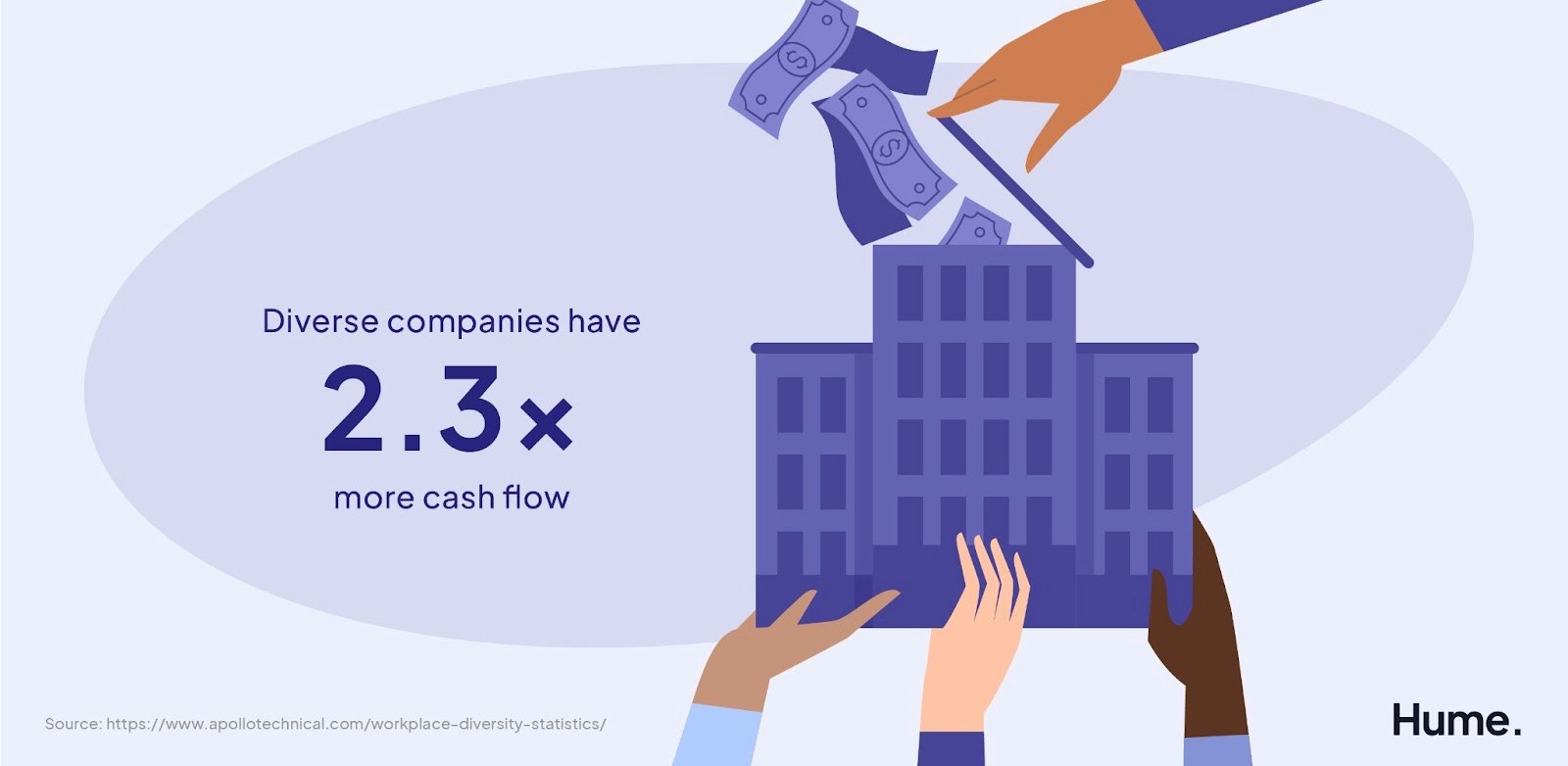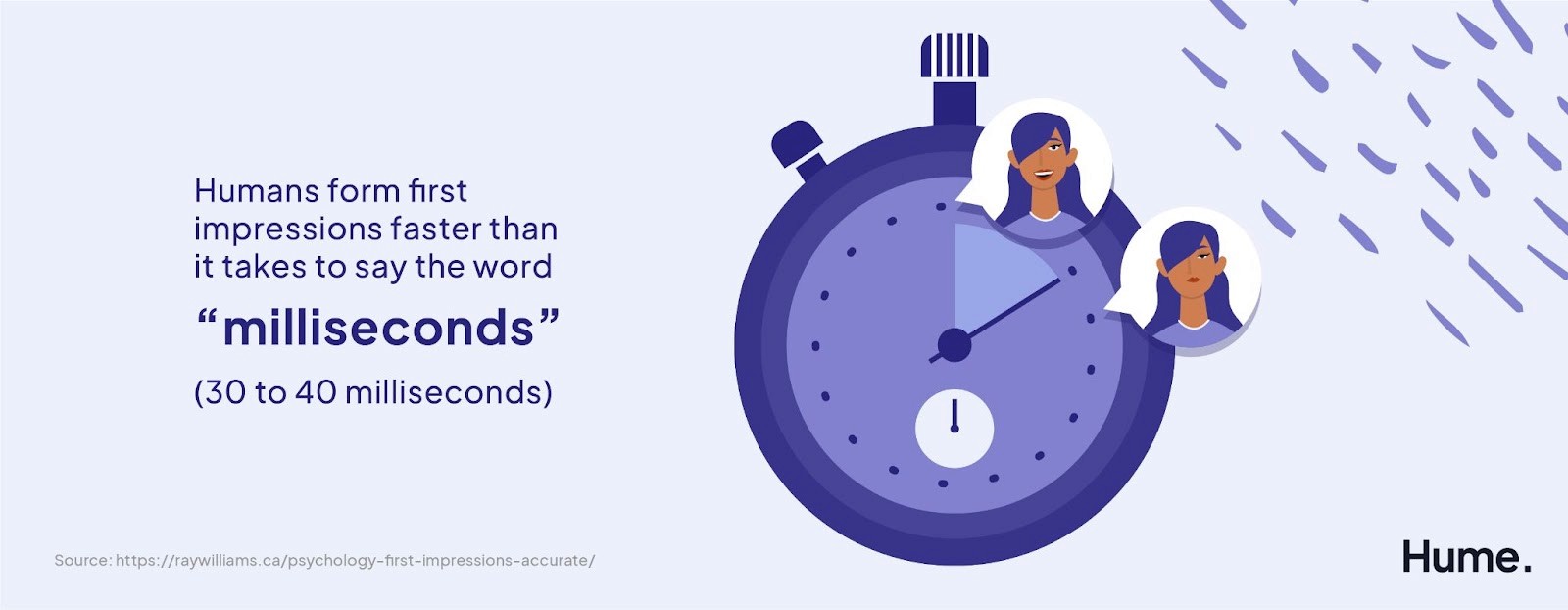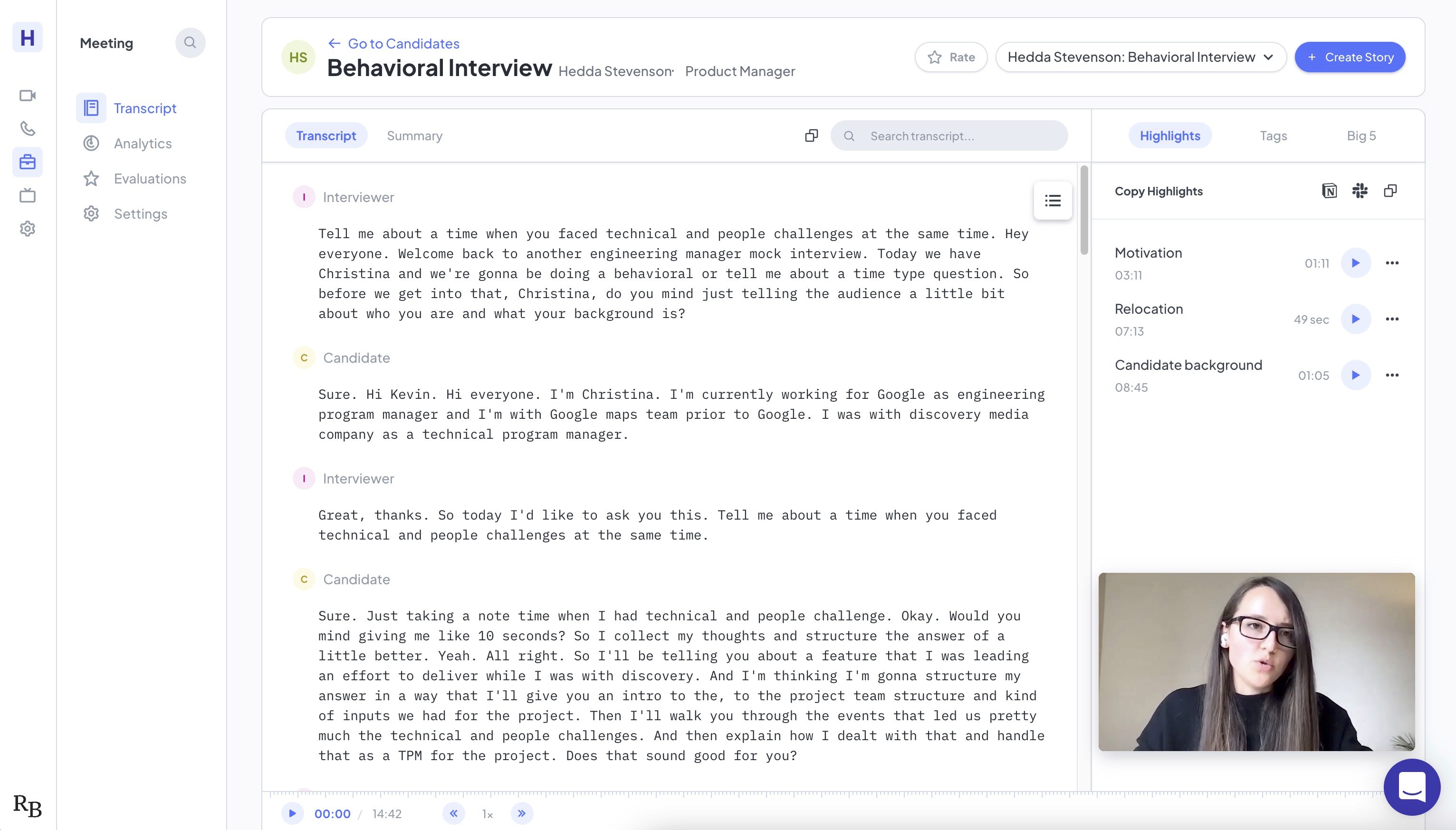8 Types of Interview Bias (And How to Avoid Them)

2023
Faster than you can even say the word “milliseconds” out loud.
That’s how fast the average person creates a first impression when meeting someone.
Doesn’t bode too well for the interview process, which is meant to objectively and equitably identify the best candidate, does it?
The truth is that biases are part of human nature. So while they can’t be completely wiped out during the interview process, they can be mitigated with some awareness and a few intentional tactics for reducing bias.
To learn more about what bias looks like during the interview process, why it can be a hindrance to your success, and several ways that you can diminish it — keep reading.
Defining interview bias
Biases are preconceived ideas about people based on our own experiences and environments. They’re often formed by our unconscious minds.
Biases aren’t inherently bad, they’re just a mechanism our brains use to quickly process information so that we can function in social situations. The problem arises when these personal biases influence decisions that should be solely merit-based.
Enter Interview bias, which is when elements other than a candidate's qualifications — such as body language, background, and more we’ll discuss later — influence the interview and its outcome.
Why you should try to avoid interview bias
The biggest issue with interview bias is that it can easily lead your team to selecting the wrong candidate for the job. As many of us have witnessed, a candidate who feels like a good fit because they look and act like your team isn’t necessarily actually a good fit.
This lack of fit can lead to dissatisfaction, underperformance, and high turnover — which is bad for morale, your quality of hire metric, and ultimately your business’ bottom line.
Additionally, biases can prevent us from building teams that are diverse when it comes to abilities, skills, race, gender, and background.
Why is this a problem? Because, across the board, diverse teams perform better.
Businesses with mature diversion and inclusion strategies have been found to generate 2.3 times higher cash flow per employee. Almost 60% of CEOs globally report that diversity has helped them compete in fresh geographies and industries. And the McKinsey Global Institute even found that the global GDP could grow by $12 trillion just by closing the male-female gender gap at work and in society.

8 Leading types of interview bias
In order to work against the biases that pop up in the recruitment process, it’s necessary to be able to identify them.
Next up we’ll walk through the leading types of interview biases.
1. Stereotyping bias
A stereotype is an impression of a person that’s based on a generalization about a “group” they fall into. These groups can include race, ethnicity, gender, background, socioeconomic status, and plenty more.
In a hiring situation, stereotyping can look like ignoring women applicants for a management role because the interviewer believes all women lack leadership skills — a deep-seated stereotype that’s seen all over the world and is rooted in outdated gender norms.
2. Nonverbal bias
Sometimes biases can arise from nonverbal cues such as body language or appearance — an element we’ll dive into more when we talk about the beauty bias later.
These nonverbal cues can influence how we perceive interviewees. For example, when an interviewer is distracted and perhaps annoyed by a candidate picking at their clothing during an interview out of nervousness, they may consider them a poor fit even if their skills are up to par.
3. Halo/pitchfork effect
Ever been so dazzled by a candidate’s high-level certifications that you kinda overlooked the fact that they don’t have any experience with the software they’ll need to use day-to-day in the role?
That’s the halo effect.
The halo effect highlights our tendency to equate strength in one area (such as certifications) to strength in all areas (such as workplace experience), even when they’re unrelated.
On the flipside of the halo effect is the pitchfork effect, also called the horn effect.
The pitchfork effect comes into play when a perceived weakness in the candidate clouds all their other characteristics, even when they’re uncorrelated.
An example may be an ugly resume. While you might personally find a poorly-designed resume offputting, it likely has no impact on the quality of the programmer sitting in front of you.
If you were hiring for a graphic designer that might be another story, of course. Context is everything.
4. Beauty bias
A bias that isn’t often connected to the workplace but is prevalent everywhere you turn is beauty bias.
Beauty bias exposes the hard truth that the more a person lines up with commonly-accepted standards of attractiveness, the more likely they are to be perceived as doing well — including in interviews and at work.This means that people who are considered obese, dressed less nicely, or aren’t up on the latest hairstyle trends will likely be judged more harshly during interviews than those who fit the attractiveness mold that society has created.
An academic review on the matter uncovered all the ways this bias plays out in workplaces: “Physically attractive individuals are more likely to be interviewed for jobs and hired, they are more likely to advance rapidly in their careers through frequent promotions, and they earn higher wages than unattractive individuals.”
5. First impression bias
As we mentioned at the beginning of this article, first impressions happen fast.
The problem is that these impressions are very rarely based on skill or even interview performance and more likely on some of the above biases, like attractiveness, stereotypes, and nonverbal cues.
And not only are first impressions in a hiring setting based on the wrong things, they’re often wrong and difficult to change.
Considering that some hiring decisions are made in the first ten minutes or less of an interview — in other words, on first impressions vs. merit — it’s important to remain vigilant and recognize when personal impressions are at play in the hiring process.

6. Contrast effect
The contrast effect is a well-documented phenomenon in which we compare each candidate to the one before them during the interviewing phase of the hiring process.
Of course you eventually want to compare each of your greatest candidates on skills, experience, and other factors when making your final hiring decision. This bias is more about how you initially rank interviewees based solely on how they compare and contrast with the candidate before them.
The problem here is that the performance of the last interviewee can impact your perception of the current one. If the last interview went poorly, this one might shine in comparison — even though they don’t actually meet all the qualifications. Or, a really great fit might not look as amazing following on an interviewee with a killer personality (Watch out, there could be some nonverbal and halo biases here!).
7. “Like me” syndrome
Look at all the homogenous management teams in the corporate world and it’ll be clear: people tend to hire others who are like themselves.
The “like me” syndrome — which you’ll hear called many other things, including “cultural matching” — combines stereotyping, the halo effect, and the human tendency to prioritize comfort and avoid the unknown. As a result, it leads interviewers to gravitate toward candidates who they see themselves in the most.
This bias opens two cans of worms: 1. it leads to non-equitable hiring decisions and 2. it decreases diversity among teams.
8. Overconfidence and confirmation bias
Many of the above types of interview biases funnel into one common action: jumping to conclusions.
This wouldn’t be such a problem if we didn’t then unconsciously direct interviews in ways that we hope confirm our conclusions.
This is called confirmation bias. When hiring, it may look like asking irrelevant and/or leading questions that lure candidates into saying what you want them to say to align with a judgment you already made. For example, if you’ve already stereotyped a young-looking candidate as being inexperienced, you may be inclined to ask narrow questions that highlight their relatively short time in the workforce instead of open-ended questions that let them fill in the blanks about their work experience.
Overconfidence is often the source of us seeking out confirmation. When we feel super confident in our judgments about candidates, we seek out sources that prove that we’re right and that our judgments are trustworthy. After all, no one wants to be seen as having bad judgment in front of their colleagues. Overconfidence and confirmation bias create a vicious cycle that plays up so-called intuition and downplays more objective hiring practices.
See some of these types of interview bias in action
Often, several of the above biases rear their ugly heads over the course of a single interview.
Imagine you’re part of a committee that’s interviewing two people for a technical role. One comes in in a designer suit and is clearly extroverted with a sense of humor that has much of the committee chuckling. The other is dressed in business casual (which is perfectly in line with your dress code) and answers all questions knowledgeably, but is notably less comfortable and jovial with the committee.
Who do you truthfully think you, and the majority of the committee, would gravitate toward?
There are several biases that can come into play in this situation:
The halo effect may cause the committee to fixate on the first candidate’s humor, connecting it with technical competence even if there’s no correlation.
The contrast effect may make the second candidate’s skill set feel weaker, even if it objectively isn’t, in the shadow of the first candidate’s sparkling personality.
For many of us, nonverbal biases would come into play as we notice the second candidate’s discomfort and lack of eye contact.
The beauty bias may cause the committee to prioritize the first candidate’s dressing skills over the second candidate’s technical savvy.
Some biases are such an impervious part of society that we don’t even recognize them. It’s easy to tell ourselves that a better dressed and more outgoing candidate is always going to be the right choice — but that isn’t true. Context matters. For a sales or client-facing role, sure, extroversion and the ability to look conventionally attractive are valuable skills. But realistically it makes no difference in the context of a technical role where the person will mostly be working behind a computer with a small subset of your internal team.
5 Tactics to avoid these types of interview bias throughout the hiring process
As we mentioned, some interview bias will likely always be present due to how our brains are wired. So the trick is to not only become aware of this fact but to also put some processes into place that help you team check their biases and prioritize merit and fairness every step of the way.
Operationalize recognizing your biases
The first line of defense against a biased interviewing and hiring process is transparency.
Be open and honest about the fact that everyone on your hiring team has biases. Create a system in which all hiring personnel get familiar with their own biases so that they can look out for them when interviewing and making important hiring decisions.
There are several programs out there, including the Social Attitudes test from Project Implicit, that may help your team uncover any unknown biases they might have around race, gender, and more.
Improve interview consistency
Winging it when it comes to interviews is a great way to give into your biases and toss objectivity out the window.
When you don’t have a consistent set of questions that you’re asking each interviewee, how can you possibly compare all candidates to make a fair hiring decision?
You can’t.
And on top of that, unstandardized interviews aren’t just unfair — inconsistent interviewing is also a main cause of bad hires according to Glassdoor.
And then there’s just all the time a fly-by-night interviewing process sucks up. When you don’t have a system for consistently conducting and internally discussing interviews, it can take weeks for your team to get all the resources they need to decide on the ideal candidate for the role.
Unfortunately, if they truly were the right candidate, they’ll probably be gone by then.
If you want to hire top talent, you have to think in days, not weeks. Top talent is typically off the market in ten days max, but most interviewing workflows take over three weeks.
It’s safe to say that high-quality hires require high-quality interview processes. If you haven’t been able to make this happen yet at your workplace, Hume can help.
Hume is a talent intelligence platform that helps interviewers record, transcribe, tag, and even summarize digital interviews on Zoom, Google Meets, and Microsoft Teams.
With Hume, you’ll finally have the platform you need to develop and perfect a lineup of behavioral and skill-based questions that always uncover the best candidate for the job. Since interviews are recorded, you can be certain you’re asking consistent questions and that you’re always able to revisit each candidate’s answers using replay, not unreliable and biased recall.
Someone on the hiring committee couldn't make it to the interview call? No worries! Using Hume’s platform, everyone has access to the valuable data created during interviews. All the interviewer has to do is whip up a highlight reel and share it via the platform. Almost instantly, your whole committee will be able to review interviews and make hiring decisions based on first-hand knowledge, not notes. Sounds like you can stop fretting over time to hire and make it a metric that differentiates you among your competitors, instead!
Want to train your entire hiring team on consistency and bias avoidance in the interviewing process? Use Hume’s playlist feature to create a feed of coaching videos and school your interviewers in the art of asking unbiased interview questions, identifying cultural fit, selling a role, and more.
Minimize interview bias with Hume — the only platform that’s custom built to help you create an equitable hiring process and unlock key digital interview data. Visit the Hume website to get on our waiting list for free and, in the meantime, follow along on LinkedIn for news on hiring and our latest developments.

De-personalize resumes
Implicit biases aren’t just based on appearances and behaviors. They can even be triggered by learning about a candidate via their resume.
Reduce opportunities for bias by avoiding learning about where a candidate lives, where they went to school, what town they’re from, what year they graduated, and even their name if possible. That means either using a digital tool to anonymize resumes (and applications, if needed) or having someone on your team who isn’t involved in the hiring process scrubbing them for you.
If this seems a little ridiculous, we can assure you that several experiments have shown that applicant anonymization works — including one that found more women were granted research time on the Hubble Space Telescope once applications were anonymized to remove any clues as to gender.
Start the interview process “blind”
Once you’re past the application and resume stage and ready to begin interviewing, there’s another thing you can do to help avoid biases for as long as possible — interview “blind.”
By that we mean conducting a phone call or video-off digital interview as the first step in the interview process. This can help you overcome some of the biases to which we’re all prone, such as beauty bias, first impression bias, stereotyping, and even the like-me effect.
Review your final impressions with outside opinions
Finally, a very achievable tactic when it comes to avoiding the most common types of interview bias is bringing other people into the decision-making process. Outside opinions can help minimize any biases you may be unconsciously harboring.
Remember, this is about testing your conclusions, not just confirming your conclusions. Don’t hesitate to seek out someone on your hiring team with whom you don’t necessarily always agree, as this person is most likely to think differently than you and therefore “balance out” your own perceptions.
Another way to get a secondary opinion is to get in touch with the references the candidate provided. Of course they’re likely to view the candidate favorably, but this is still a good way to at least get a fresh perspective on a candidate and ask any questions you may have.
You have all the tools you need to minimize interview bias
It can be daunting to fight interview bias when you know that bias is simply an element of our human nature.
But the secret is that you don’t need to eliminate bias altogether — you just need to deploy the tools that minimize it to create a more equitable and diverse hiring process.
Those tools are awareness, the achievable tactics we listed above, and support from smart hiring technology like Hume.
Get on Hume’s waiting list and get on your way to minimizing interview bias and building a team full of smart and diverse pros.



